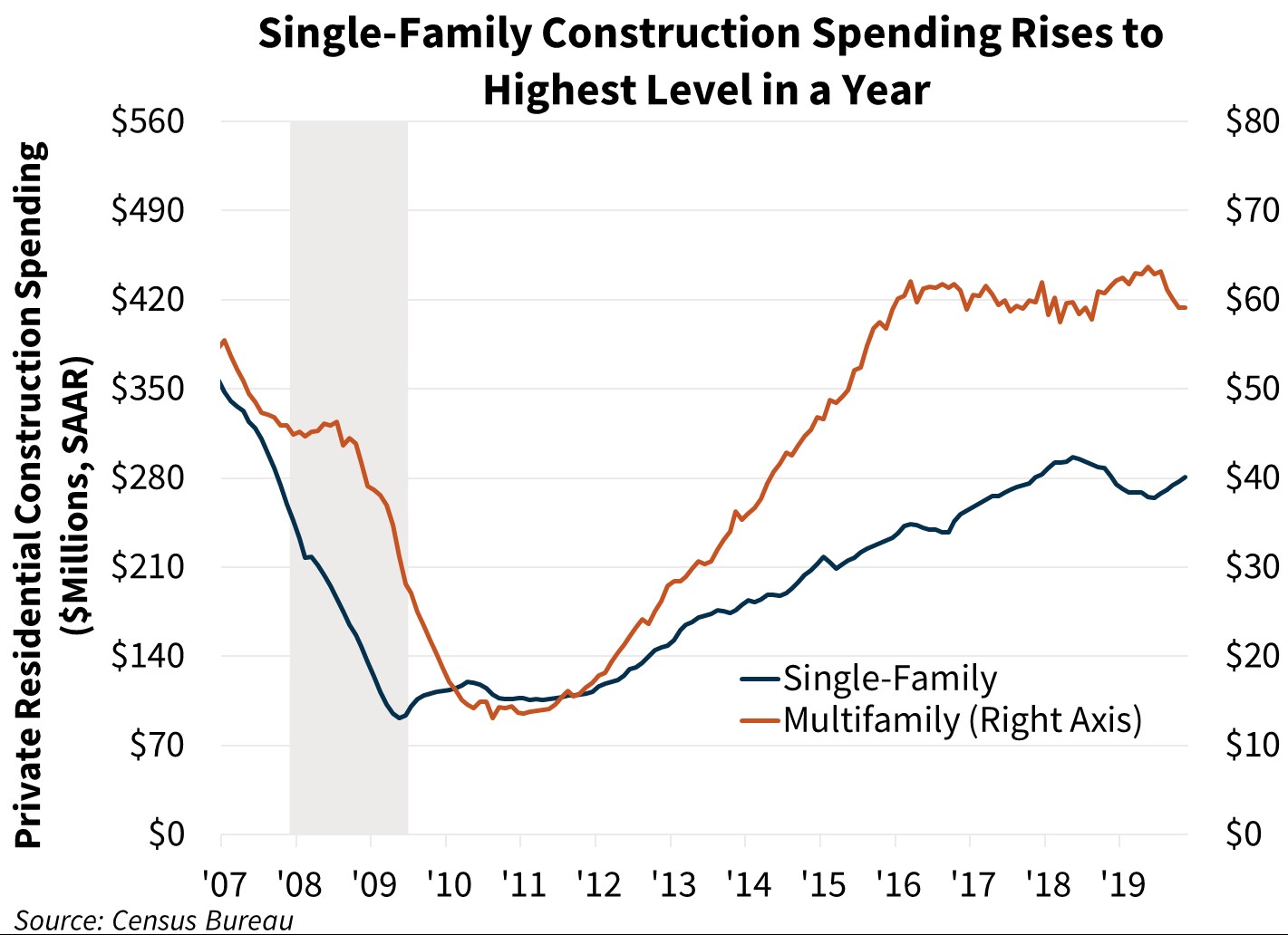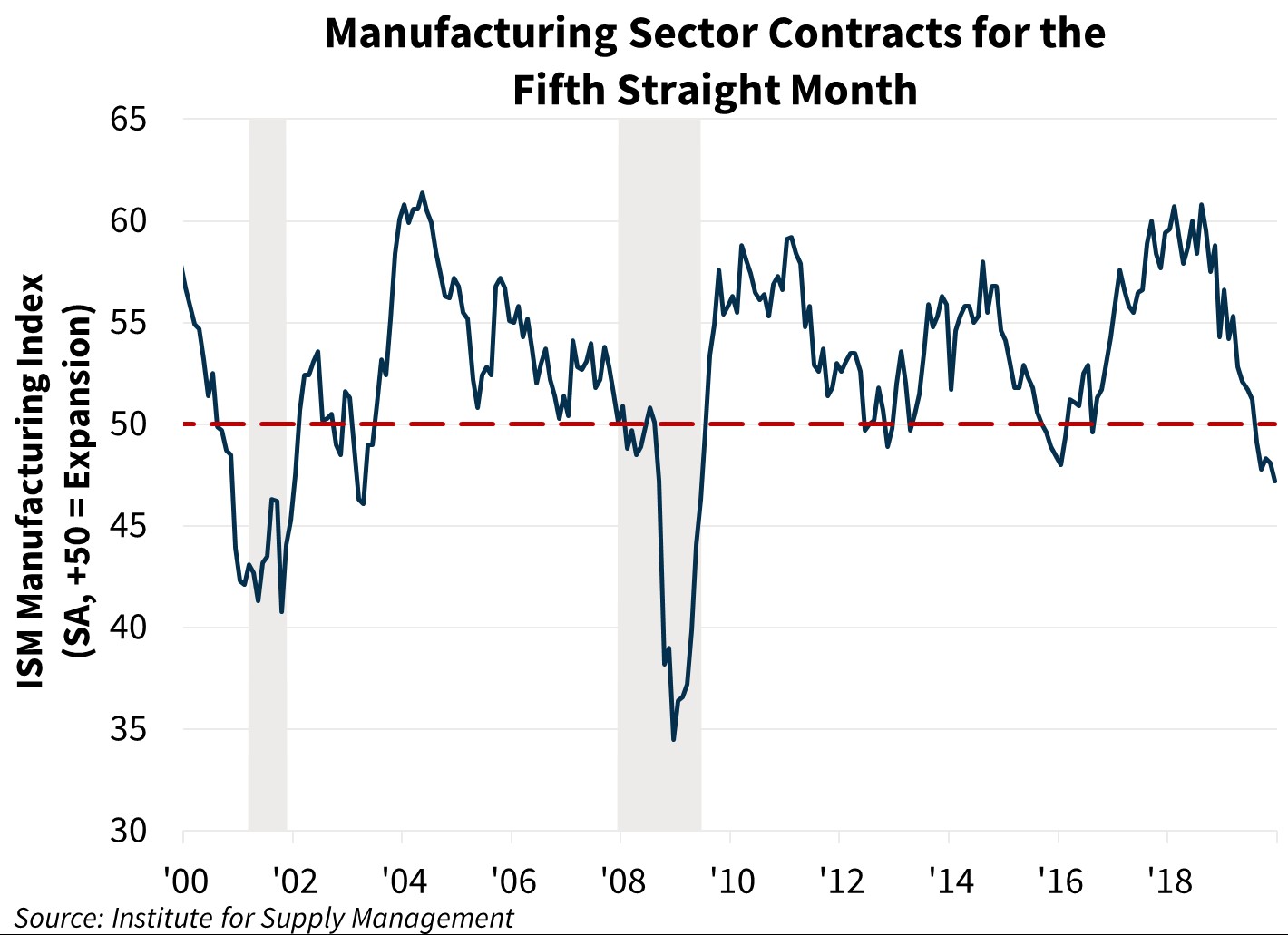Housing Likely to End 2019 with a Bang
Key Takeaways
- Pending home sales rose in November to the second highest level since the end of 2017 and are now 7.4 percent higher than year-ago levels.
- Private residential construction spending rose in November for the fifth straight month as October’s initially reported decline was revised upward. This growth has been fueled primarily by the single-family space, which saw spending rise to the highest level in a year, and by home improvement spending. On a year-over-year basis, single-family construction outlays turned positive for the first time since November 2018.
- The ISM Manufacturing Index ended the year by falling for the eighth time in nine months. In fact, the index declined to the lowest level since June 2009 and has been in contraction territory for the past five months.
Forecast Impact
Solid November pending home sales, which typically lead closings by one to two months, and strong residential construction spending should mean a strong finish for housing activity in 2019. We expect both new and existing home sales to increase in the fourth quarter, and we expect a significant increase in single-family starts, all of which should help boost residential fixed investment. We expect this strong momentum to carry forward into 2020. Manufacturing activity, on the other hand, continued to show contraction in December, which does not bode well for business fixed investment. While we still expect business fixed investment to turn positive in Q4, we anticipate that the growth will be modest.


Details on Key Takeaways and Other Releases
- The National Association of REALTORS® Pending Home Sales Index, which records contract signings of existing homes, increased 1.2 percent in November to 108.5. The West region drove the gain, rising 5.5 percent over the month.
- Private residential construction spending increased 1.9 percent in November, driven by a 1.2 percent gain in new single-family construction spending, according to the Census Bureau. Spending on new multifamily construction was unchanged, while spending on home improvements rose 3.4 percent. From a year ago, single-family construction spending rose 0.1 percent, compared with a decline of 3.8 percent for multifamily.
- The Institute for Supply Management (ISM) Manufacturing Index fell 0.9 points in December to 47.2 (any reading below 50 indicates contracting activity).
Rebecca Meeker
Economic and Strategic Research Group
January 3, 2020
Opinions, analyses, estimates, forecasts and other views of Fannie Mae's Economic and Strategic Research (ESR) Group included in these materials should not be construed as indicating Fannie Mae's business prospects or expected results, are based on a number of assumptions, and are subject to change without notice. How this information affects Fannie Mae will depend on many factors. Although the ESR group bases its opinions, analyses, estimates, forecasts and other views on information it considers reliable, it does not guarantee that the information provided in these materials is accurate, current or suitable for any particular purpose. Changes in the assumptions or the information underlying these views could produce materially different results. The analyses, opinions, estimates, forecasts and other views published by the ESR group represent the views of that group as of the date indicated and do not necessarily represent the views of Fannie Mae or its management.
